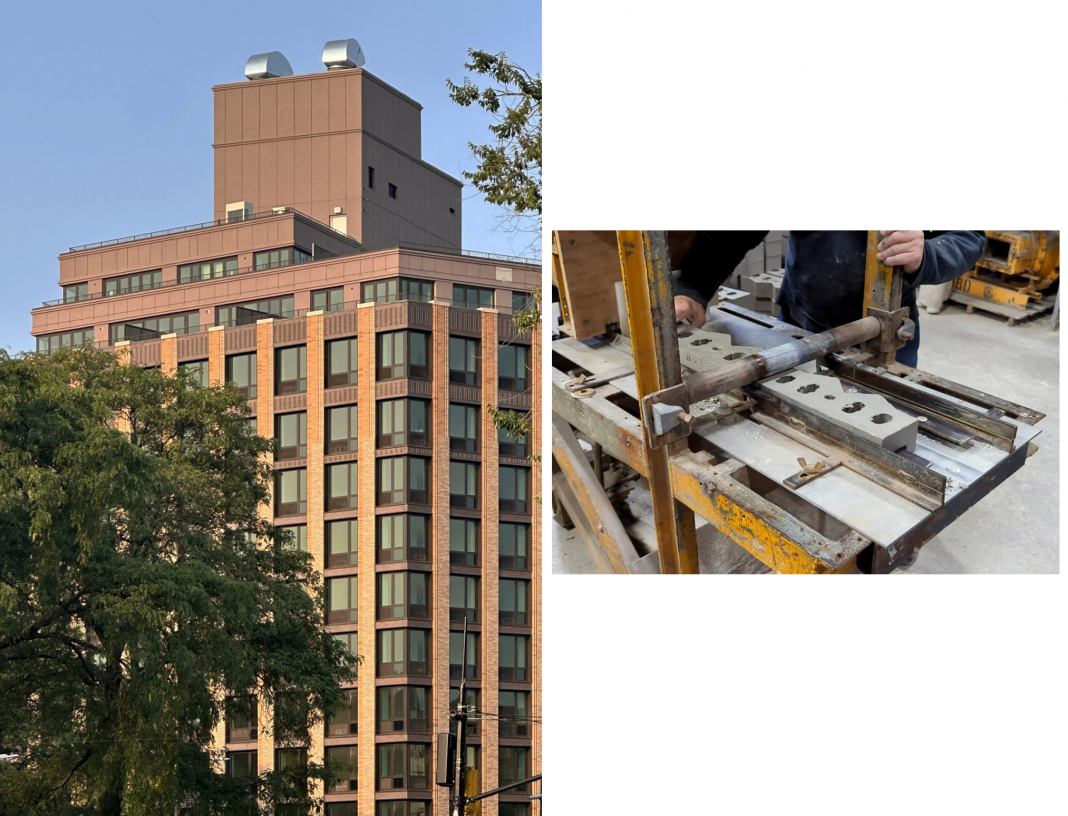In the heart of Brooklyn’s Windsor Terrace, a striking new residential tower named One Park Point is redefining how traditional materials meet contemporary design. Spearheaded by FXCollaborative and brought to life through a unique partnership with The Belden Brick Company, the tower’s defining feature—a dynamic, sawtooth-patterned brick facade—merges industrial craftsmanship with architectural artistry. At once grounded in context and pushing the boundaries of brick construction, the project offers a fresh dialogue between texture, shadow, and urban character.

Rethinking tradition with a modern twist
FXCollaborative’s vision for One Park Point called for a facade that would be rich in visual depth while remaining cost-effective and contextually resonant. To meet this challenge, Belden Brick—a company with over a century of brickmaking expertise developed a custom sawtooth brick that brings movement and dimension to the building’s exterior.
This was no ordinary design task. The architectural studio sought to channel the varied masonry textures seen throughout Brooklyn’s Windsor Terrace, incorporating subtle references to Art Deco motifs and vertical masonry patterns. The result is a facade that is both locally inspired and architecturally progressive, forming a textured skin that responds to light and shadow throughout the day.
Belden Brick’s commitment to craftsmanship and innovation allowed them to translate these ideas into a manufacturable reality. Their team engineered a unique shape that could not only withstand structural requirements but also provide the visual complexity the architects envisioned.

From custom die to kinetic facade
Creating the sawtooth brick was not a straightforward production challenge. Because of its complexity, Belden Brick adapted its manufacturing process to accommodate the brick’s geometry. A specialized push cutter was employed to shape the projecting lip stretchers, and the production cycle was intentionally scaled to smaller batches to maintain consistency and quality. “We are continually pushing the boundaries of what’s possible with special shapes,” said Tabitha Alleshouse, Belden Brick’s manager of architectural shapes. “Transforming simple geometric lines into architectural statements is where function meets artistry.”
Each brick was produced using a single custom die, creating a repeatable module that, when assembled, gives the facade a rhythmic and sculptural quality. As sunlight moves across the surface, the bricks’ projections and recesses shift in tone and shadow, animating the facade and lending it a kinetic energy that evolves throughout the day. This focus on modulation and light interaction reflects one of the most compelling trends in contemporary architecture—where material surfaces are not just decorative, but responsive and alive.

Rooted in place, inspired by history
While technically advanced, the design remains deeply connected to its surrounding environment. FXCollaborative ensured that One Park Point harmonized with nearby architectural elements, including the circular entrance of Machate Circle at Prospect Park. The brick tones—warm tans and muted charcoals were carefully selected to mirror the textures and hues of the natural and built context.
In total, more than 57,000 custom bricks were used, including projected stretchers, lip stretchers, and traditional face bricks. This massive yet intricately detailed assembly stands as a tribute to Brooklyn’s layered architectural heritage, while also advancing the possibilities of masonry design. “While we’ve previously explored projections in brickwork,” Alleshouse noted, “the sawtooth design—especially executed in multiple colours—marked an exciting first for us.”

Craftsmanship meets innovation
Belden Brick’s role in One Park Point reflects the company’s larger mission: to blend heritage techniques with cutting-edge technology. Their manufacturing philosophy embraces experimentation, whether that means developing new dies, refining shaping tools, or rethinking how traditional materials are applied in modern architecture.
“We’re seeing a renewed interest in texture and depth,” Alleshouse observed. “Architects are looking for materials that do more than just fill a structural function—they want materials that engage, reflect, and evolve with their surroundings.” The success of the One Park Point project underscores how thoughtful design and technical innovation can come together to transform a standard residential facade into a living, breathing piece of the cityscape.
The future of brick design
As cities grapple with densification and design uniformity, projects like One Park Point remind us of the value of material expression. The use of custom brick in this Brooklyn tower does more than beautify—it creates a tactile, visual experience for residents and passersby alike. It also points toward a broader shift in how architects are embracing material specificity to create lasting urban impact.
With this project, Belden Brick has not only contributed a visually arresting building to the Brooklyn skyline, but also demonstrated how material innovation can drive architectural storytelling. The company’s willingness to experiment with form, scale, and production makes it a key player in the evolving dialogue between craft and modernity.
As urban landscapes continue to demand more thoughtful and resonant architecture, collaborations like this one suggest an exciting future for brick—one in which every shape tells a story, and every shadow reveals a new dimension.



